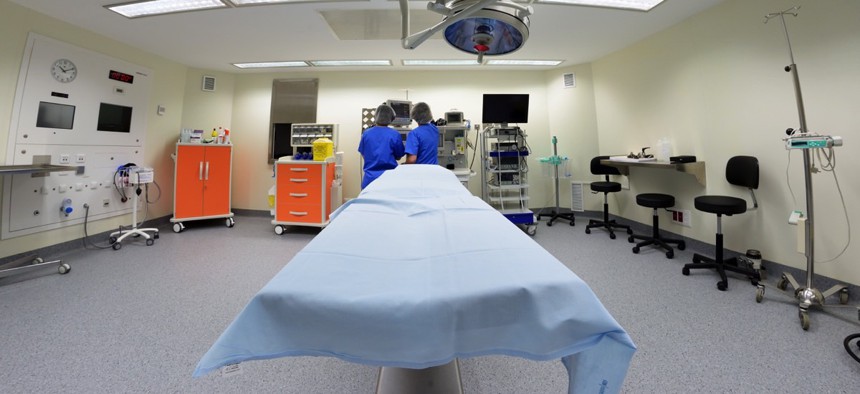How Pennsylvania Is Visualizing Medical Error Data to Save Lives

A small staff is doing big things with the right training.
Pennsylvania saw a 35 percent drop in high harm event reports at medical facilities the last 10 years, representing more than 100 lives saved annually, a finding uncovered thanks to data visualization.
The Pennsylvania Patient Safety Authority was established in 2003, under the Medical Care Availability and Reduction of Error Act, as part of malpractice insurance reform intended to reduce the number of physicians leaving the state.
Charged with the collection and analysis of medical error data at facilities licensed through the commonwealth’s Department of Health, the independent agency provides recommendations and advisories for hospitals, surgical centers, abortion facilities and nursing homes.
When facilities report errors, they’re classified as “incidents”—mistakes that could have injured a patient but didn’t—or “serious events” resulting in unanticipated injury or death that require additional health services.
PSA’s repository of 2.5 million reports, possibly the largest in the U.S., is an invaluable source for analyzing error trends, identifying causes and problem facilities, and informing new strategies to protect patients. But without data visualization it would present one giant headache for the small agency’s 18 full-time staff members and approximately 20 contractors.
“The work we do broadened over the years, so we have analysts, who are generally contractors, working in a number of places in the state to do formal, scholarly analysis and publish the Pennsylvania Patient Safety Advisory journal,” said Howard Newstadt, PSA finance director and CIO, in an interview.
In 2008, PSA initiated its Patient Safety Liaison Program for petitioning feedback from the health care facilities under its purview, which necessitated better ways of organizing and querying agency data. At first the project focused on data warehousing and reorganizing databases, but advances in hardware and data software led PSA to consult with Cary, North Carolina analytics company SAS.
SAS Visual Analytics enables PSA to use servers with a greater amount of random access memory (RAM), 256 gigabytes to be exact. That, in turn, allows for multiple, simultaneous analyst sessions with complete datasets generally ranging 5 to 15 gigabytes in flat file size—sessions that hone in on specific sections of the data.
“What really got to me was its ability to reach into the data and give you the ability to organize individual fields,” Newstadt said.
Users essentially create sharable webpages with changeable filters, calculations and variables for querying the data. Whereas, in the past a single analyst would be responsible for answering PSA questions surrounding their query. In short: the workload is reduced.
PSA’s original data warehouse project budget was between $800,000 and $900,000, Newstadt said, but switching to SAS saved about half that. Building out a warehouse would’ve still required significant work from developers building queries, and this way no database restructure was needed.
A SAS architect came in February 2014 and set up a proof of concept in the commonwealth’s data center. In just three days, Newstadt’s team was looking at four to five medical error reports where it could drill down into the data and ask various questions.
Over that summer a new server was installed, the full system with around 40 report templates was built, and about 30 employees were trained in preparation for the January 2015 launch.
Some staff pick up the skills needed to use the system faster than others, Newstadt said, but most are trained now—including nurses and doctors.
Confidentially is supported in accordance with internal commonwealth standards, and PSA has gone from simply looking at event counts to examining events per thousand inpatient days. Rate data is really beneficial, Newstadt said.
Liaisons conferencing with facilities and meeting with them in the field are a big reason for the decrease in high harm event reports, but data analytics have led to other important discoveries as well.
For instance, early on, errors were being caused because new contract nurses didn’t necessarily understand the color-coded wristbands their medical facilities were using; different facilities used different codes.
Pennsylvania was one of the first states to standardize its code, before national standards were adopted.
Data analytics empowers PSA’s trained staff to find innovative ways to look at medical errors.
“We’re seeing savings having those who utilize the system being able to do their own development,” Newstadt said. “Almost all development is done by professional staff.”
Dave Nyczepir is a News Editor at Government Executive’s Route Fifty and is based in Washington D.C.
NEXT STORY: EPA Employees Responsible for Colo. Mine Disaster Will Not Face Criminal Charges






